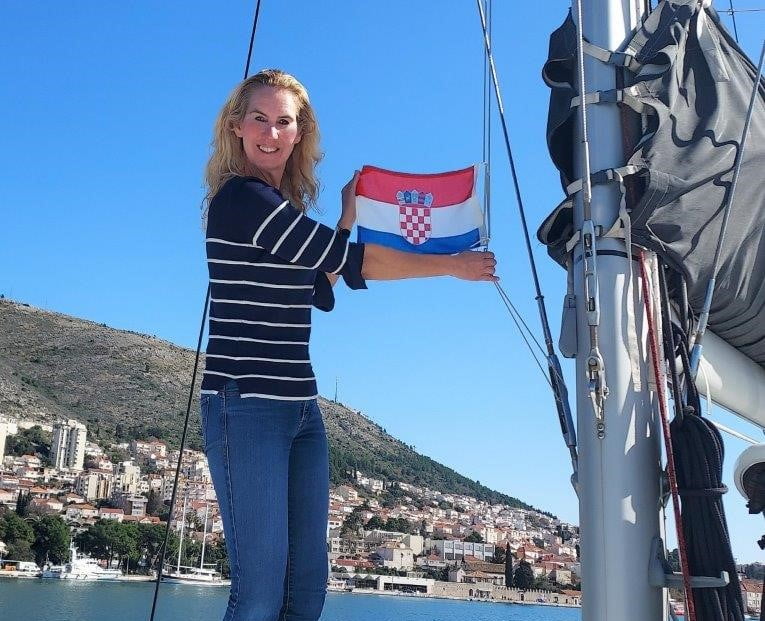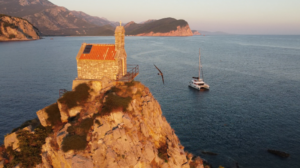After 7 months of enjoying the great country of Italy, it was time to explore a different country: Croatia.
When we were in harbor of Bari (Puglia) on the southeast side of Italy, we made plans to sail over the Adriatic Sea to Dubrovnik. It would be a 21 hour sail, so including 1 night of 11 hours of sailing in the dark. A weather window came quickly (the next day!), so after lunch at 13.00h on a Saturday, with Southwest winds we started sailing towards Croatia.

At 18.30u it became dark and we knew that at 5.30u it would become light again, so 11 hours sailing in the dark. It’s always a bit scary, because when I say dark, at sea it’s pitch black. So sailing like this feels like driving a car with a blindfold on…You only can rely on your instruments: with radar on your navigation screen, anything that everything that extends 1 meter above water turns red. So that means fisher boats, buoys, markers are visible in that way to you and you can avoid them. This night it was quite on the Adriatic Sea, we had to cross the shipping lane (the channel from south to north were all big ships like cruises, ferries or oil tankers motor) which went fine.
People often think that 11 hours sailing in the dark is boring. And of course it sometimes is, but don’t underestimate how ‘busy’ you are: you have to check the radar all the time, check big boats in your surroundings, because our speed is 5 knots per hour, their speed is 30 knots. So they are quicker they will be with you faster than you think and oil tankers don’t brake (quickly)…
And never underestimate nature. Suddenly the wind blows harder, or the wind drops and blows from a different direction than predicted. Never a dull moment with the weather, which often does not keep to its own forecast 😉. So waves can come from a direction which is not beneficial for your boat (slowing you down or gives annoying pounding on the side of the hull) , so you have to change course, taking into account the current and wind angle in the coming hours, so that you do not run into problems later in reaching your destination.
And for the rare quiet moments that are left, there is always the Disco top 500 on Spotify and the airfryer to make springrolls to keep us happy and motivated during the 21 hour sailing.
A Big Moment is when sunrise started, around 5.30h is already starts to get a little lighter in the sky and at 6.15h the sun rose. Another Big Moment is seeing the first contours of land, the hills of Croatia on the first islands were silhouetted against the sky. Land in Sight! It can sometimes take 3 hours of sailing before you will arrive, but it is great to see your goal in the distance!
We arrived at the first islands before the coast of Dubrovnik, past a beautiful bridge, which reminded me of the Erasmus Bridge and we saw the masts of all other sailing boats already in the harbor of Dubrovnik where we booked a berth for 3 days.


You would think: ‘Ah great, just sail in there, tie your boat to your mooring in the harbor you booked, have a nice breakfast aboard at 9.00h now and have a bit of sleep’.
No, what followed next when sailing into Dubrovnik after 21 hours being awake, was 1.5 hours of administrative hassle….
Because Croatia is part of the European Union (they have the Euro since 1 January 2023), you don’t have to clear your boat, but Croatia is not part of Schengen, so there is no free travel for people. So we had read we had to report at the Port Authority of Dubrovnik and they told us to go the first quay on the left with the Q-sign that stands for quarantine.

We had to see 3 organisations in this Q-building: the police for our passports, customs to buy a Vignet for foreign sailors and the harbor master to check in with the harbor. Our paperwork that we brought was all ok, we paid the Vignet and harborfees and then had to walk symbolically through a security check gate to officially enter Croatia. A moment of glory!
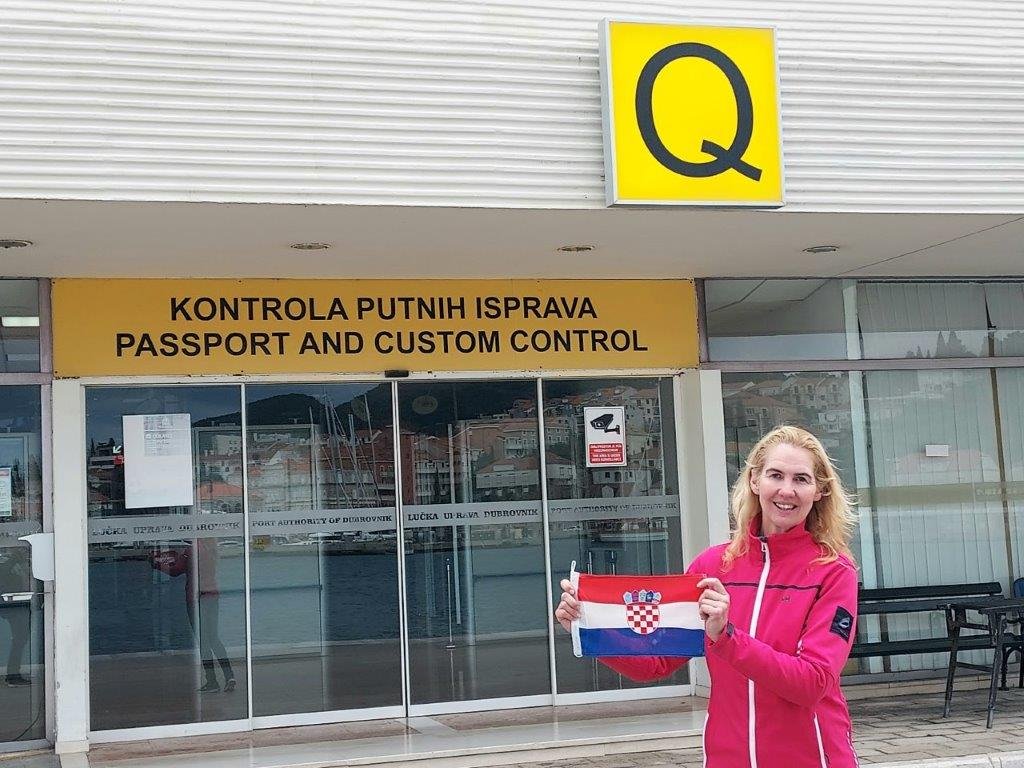
Now we could tie our boat to the mooring in the harbor and have some rest. The harbor was great, comfortable and quiet.


Nice view on the city of Dubrovnik, the hills and also great to see the lights during the evening.

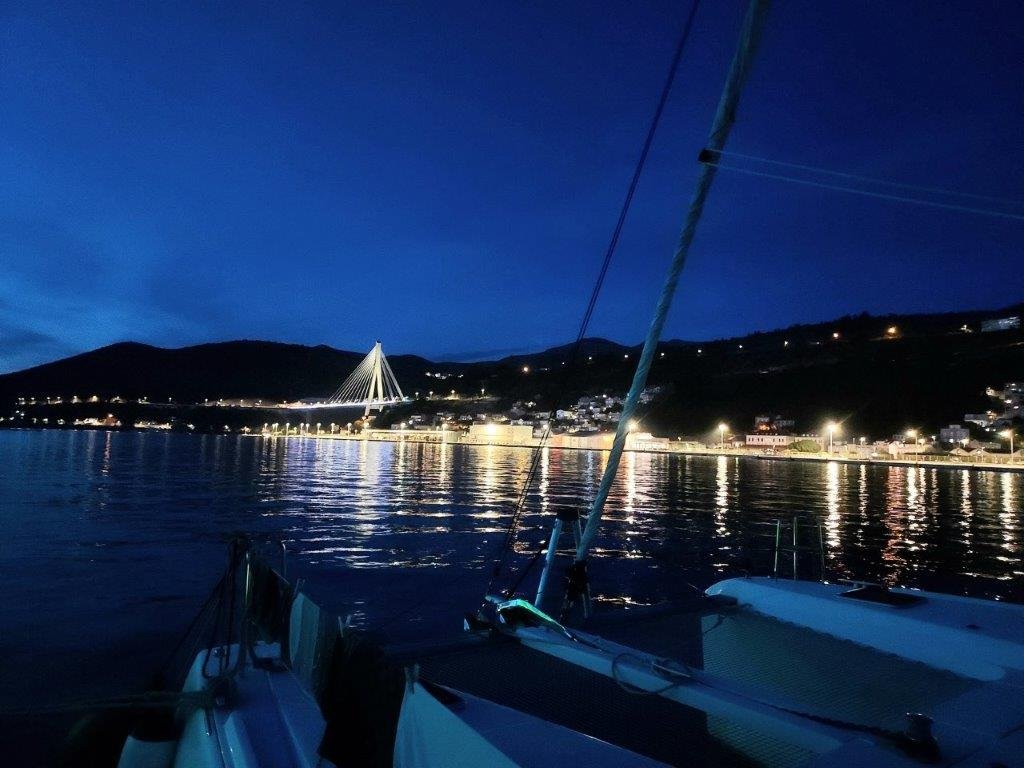
The next morning we got up fresh and first thing to do when you sail into a new country is to change the Italian flag to the Croatian flag, which looks a lot like the Dutch flag actually! You can see the bright red strips of the Italian flag has completely faded away. That will also happen with the red in the Croatian flag, after the 4 months that we intend to stay in this country 😉.

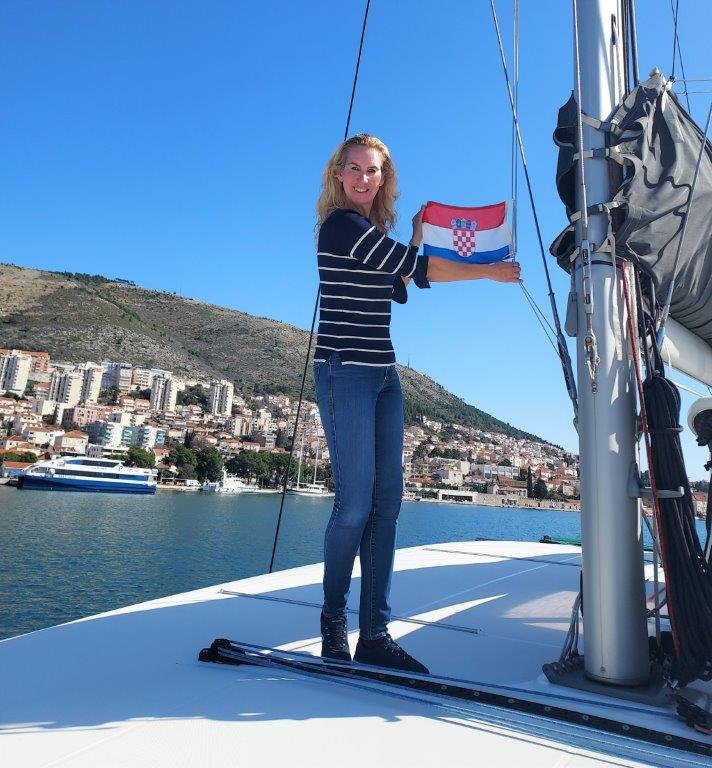
The weather was great, sunny and 16 degrees, so we started cycling into the old city center of Dubrovnik.

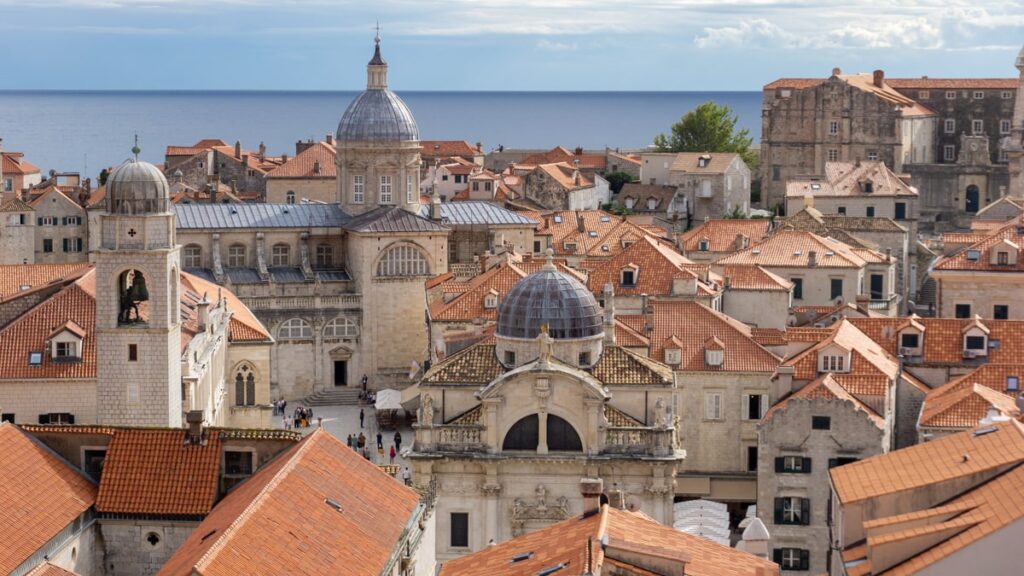
We noticed quickly a few things: people are quite taller compared to the Italians, the streets are a lot cleaner and more modern. The prices in the shops are lower (and Italy was already 20% cheaper than the Netherlands), people speak English very well and are polite. Not that enthusiastic and social as the Italians, but still open minded and friendly. The Croatian language is really difficult to read or speak: the word for harbor is ‘luka’, bridge is ‘most’, small is ‘mali’, hello is ‘dobar dan’ and the country of the Netherlands is called ‘Nizozemska’ here in Croatia. So really not obvious if you are used to the Germanic language group (which also includes English and German) compared to the Slavic language group with Russian, Polish and Czech!
We still see the former currency ‘kuna’ mentioned in the shops: 7 kuna is now 1 euro. Double prices are still mentioned, which is not strange after just 1 year of using the euro (Croatians had only a two week transition period, week 1 and 2 of 2023 you could use both currencies in January and then the kuna was out of use.
Dubrovnik is a truly beautiful city, the historic city center is famous for its many old buildings and charming medieval streets. You walk very sheltered between the legendary city walls that have their origins in the 9th century.


Of course we are always drawn to the harbors of a city, like lemmings to the water, so we visited them too and stood on the city walls to view them.
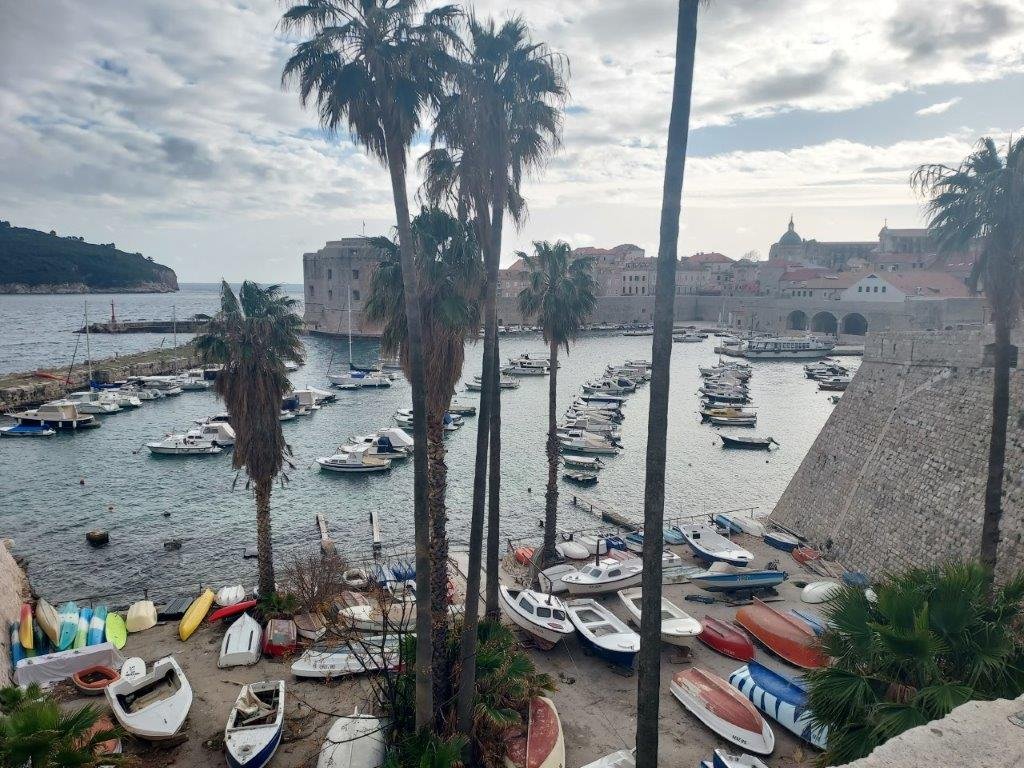
Although Dubrovnik is a fairytale and Croatia seems very safe and relaxed, that was certainly not the case 30 years ago. In 1991, Croatia, along with several other republics, declared its intention to seek independence from Yugoslavia. These declarations of independence were not recognized by the Yugoslav government or by the Serb minority in Croatia and Bosnia and Herzegovina, leading to armed conflict.
The Homeland War that followed, known in Croatia as the “Domovinski rat”, took place from 1991 to 1995, mainly in the territory of present-day Croatia. We certainly saw traces of this: prints of bullet holes and attacks in the medieval rents of Dubrovnik, or here a tank that has remained as a souvenir in a park near the harbor.
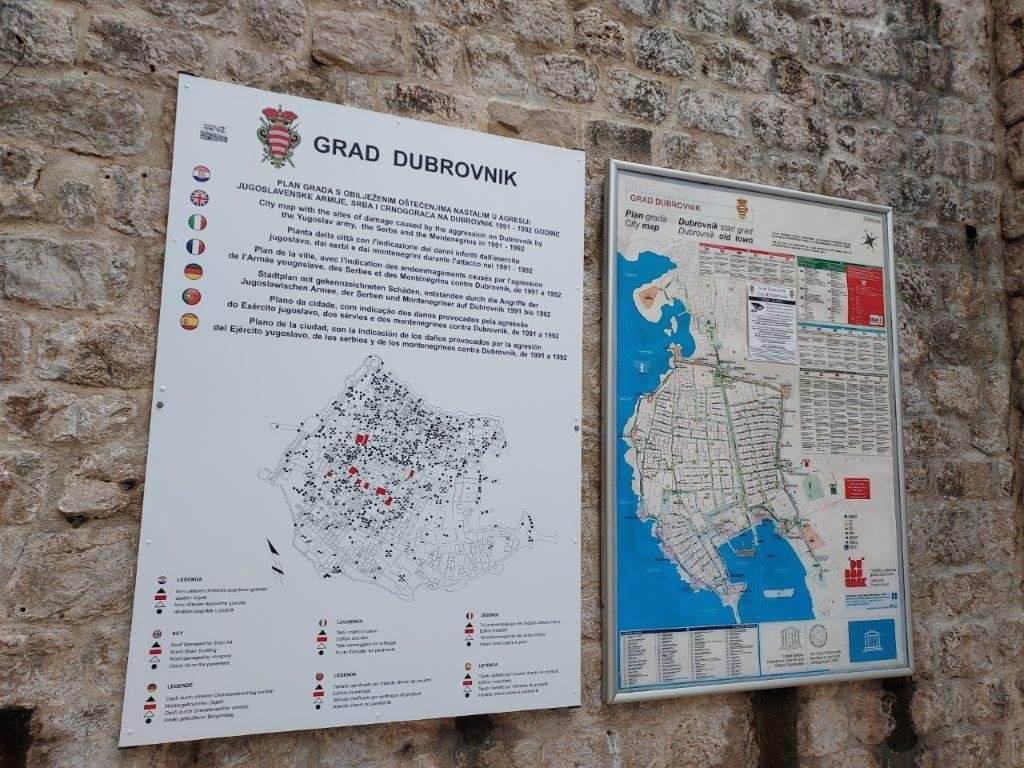
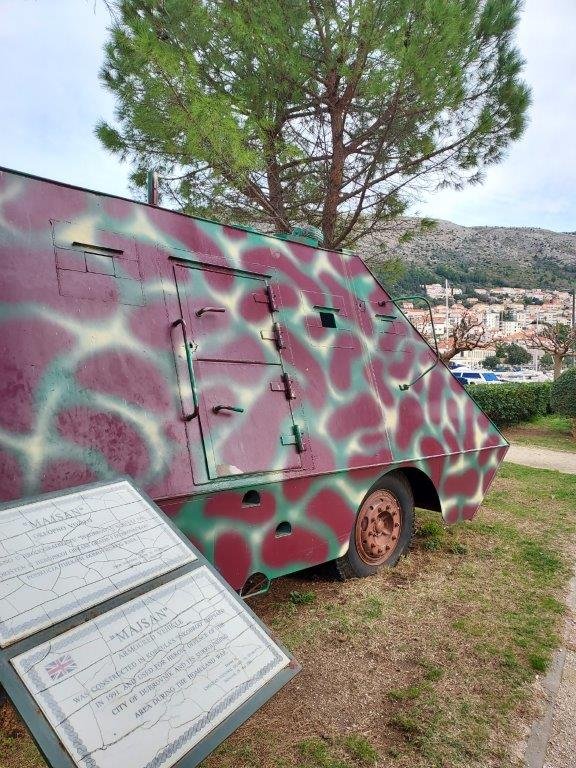
The war was particularly fierce and had profound consequences for the population. Cities and towns were besieged, and widespread destruction and ethnic cleansing took place. Dubrovnik, a historic city on the Adriatic coast, experienced one of the most tragic episodes of the war. At the end of 1991, the city was besieged for months by the Yugoslav People’s Army. Despite being known for its historical and cultural significance and being a UNESCO World Heritage Site, Dubrovnik was heavily damaged by artillery shelling. This led to international condemnations of the aggression against the city.


The Homeland War formally ended with the Erdut Agreement in 1995, which led to peace and the reintegration of the last occupied territories into Croatia. However, the conflict has left lasting marks on Croatian society and remains an important part of national identity and memory.
